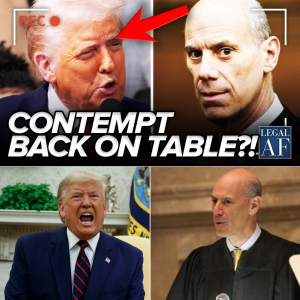Right-Wing Media Scrambles to Navigate Tumultuous News Cycle as Internal Tensions Spill On-Air
A turbulent week across conservative media culminated in a series of unusually tense live segments on Fox News and other right-leaning outlets, as anchors and commentators struggled to navigate competing narratives surrounding congressional votes, economic anxieties and the accelerating presidential campaign. While no single event triggered the cascade of on-air friction, the convergence of several politically sensitive storylines created a combustible environment that analysts say exposed deeper fractures inside the conservative media ecosystem.
The most visible flashpoint came during a panel discussion on Fox News, where contributors clashed over a procedural vote in Congress tied to federal records transparency. Although the vote itself was administrative in nature, online speculation — much of it inaccurate — linked it to unrelated conspiracy theories, placing hosts in the difficult position of debunking claims that portions of their own audience believed.
The tension became apparent as panelists attempted to address both the factual record and the expectations of viewers who had already encountered misleading viral content. One anchor, attempting to temper the conversation, repeatedly emphasized that the legislation “had nothing to do with any criminal investigations,” prompting visible frustration from a commentator who insisted the matter deserved “closer scrutiny.”
Economic News Adds to the Strain
:max_bytes(150000):strip_icc():focal(749x0:751x2)/mike-johnson-donald-trump-tout-102824-deb9b91720bc457f8d8cb14485642403.jpg)
Compounding the challenge for conservative media was a disappointing economic report released earlier that morning, which revealed slower-than-expected job growth. The report undercut a series of talking points circulated by the Trump campaign about economic momentum and sparked heated exchanges among analysts attempting to reconcile the data with political priorities.
During an afternoon broadcast, one Fox Business host grew visibly exasperated as panelists interrupted one another over whether the economic numbers constituted a temporary fluctuation or a broader trend. The segment briefly went off-script as production staff attempted to shift topics, only for the discussion to return to the report minutes later.
“These moments are not unusual during election years,” said Dr. Meredith Han, a professor of political communication at NYU. “But what we’re seeing now reflects a more volatile media climate — a convergence of misinformation pressures, economic uncertainty and shifting internal loyalties.”
Trump’s Influence Creates Additional Pressure
Former President Donald J. Trump, whose statements continue to shape the conservative media cycle, added another layer of complexity. A series of posts criticizing congressional Republicans for “weak leadership” set off a scramble among commentators to determine whether to echo his tone or adopt a more cautious approach.
Several longtime conservative contributors acknowledged off-camera that they feel increasingly boxed in: pressured to support Trump’s messaging while trying to maintain credibility among independent and moderate viewers. “There’s a tension between serving the audience and serving the facts,” said one senior producer, speaking anonymously to avoid professional repercussions.
Misinformation Surge Forces Networks to Fact-Check in Real Time
The most challenging moment came when hosts were forced to address false online claims suggesting that the congressional transparency vote was connected to so-called “Epstein files.” Fact-checkers across multiple networks emphasized that no such bill exists and that the vote involved routine administrative language.
Still, the sheer volume of posts circulating across TikTok, X and YouTube meant the topic had already taken root before hosts could push back. “It’s extremely difficult to correct misinformation when viewers arrive with preconceived narratives,” said Han. “By the time the truth is delivered, many have already emotionally committed to the false version.”
Fractures Emerge in Real Time

Several on-air moments captured the strain. During a primetime segment, two frequent contributors openly disagreed over whether the network should spend airtime correcting viral rumors. The host tried to steer the conversation toward verified reporting, but the panelist insisted that “you can’t ignore what millions of people are talking about.”
The segment ended abruptly as producers cut to commercial.
Another tense exchange occurred when a commentator argued that the network was “playing defense” rather than advancing a coherent political message. The anchor responded sharply that “our job is journalism, not messaging,” prompting a rare moment of applause from the studio audience.
Media Analysts See Warning Signs
Experts say the week’s unusually chaotic broadcasts underscore a deeper challenge facing conservative media: the struggle to maintain editorial control in an era where online influencers and fringe platforms increasingly drive the narrative.
“Fox News used to set the tone for the right,” said Dr. Jordan Fields, a historian of conservative media. “Now it often reacts to narratives that begin elsewhere — sometimes on platforms with little accountability.”
Fields emphasized that this dynamic creates unpredictable on-air environments: “Hosts are juggling three audiences at once — traditional viewers, online activists, and political figures who expect loyalty.”
Looking Ahead
Network executives are reportedly assessing the week’s coverage to determine how to prevent similar on-air breakdowns as the election season intensifies. Several producers privately expressed concern that upcoming hearings, economic reports and campaign-trail controversies will produce even more pressure.
“This is going to be a turbulent year,” one executive said. “The challenge isn’t the news — it’s the speed and volatility of the ecosystem around it.”
For now, the week’s broadcasts serve as an early indicator of a media environment where political narratives spread faster than networks can respond, where misinformation blurs with legitimate debate and where even seasoned hosts struggle to keep pace with a rapidly shifting conservative landscape.





